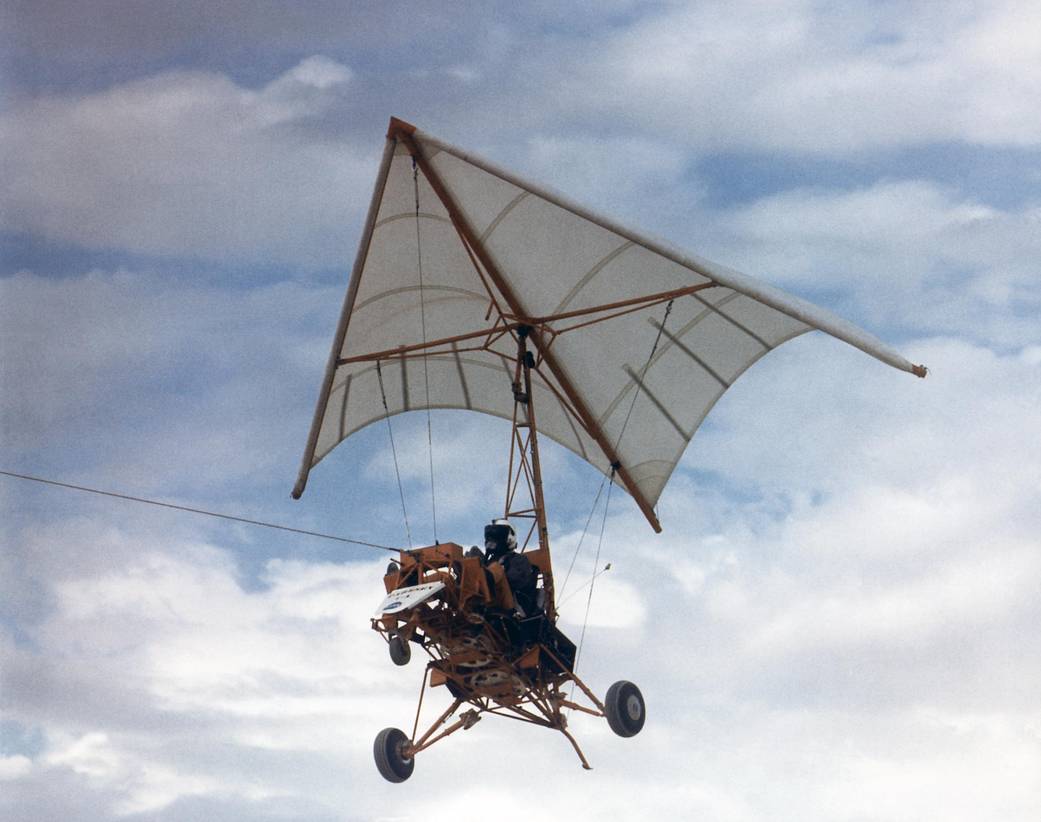
Air Force photo
The Paraglider Research Vehicle 1-B (Paresev) tested the concept of a paraglider, designed to enable a Gemini capsule to fly to a controlled ground landing. This would remove the need to make an ocean splashdown at the end of a spaceflight. Once the paraglider was deployed, the Gemini crew could use it to steer toward a touchdown point and to land on three retractable skids. Because the paraglider represented an unproved technology, approval was given to build a simple test vehicle to try out the concept. The paraglider research vehicle, or Paresev, was built of steel tubing, with a fabric paraglider. The Paresev was unpowered, so it had to be towed aloft either by ground vehicles or aircraft, such as a biplane or a light aircraft. The Paresev was a demanding aircraft to fly. NASA pilot Milt Thompson said that he found it more difficult to handle than the later lifting bodies. Due to technical and cost problems, the Gemini spacecraft never used the paraglider, and all missions made ocean splashdowns.October 1968NASA Photo / › Read Paresev Project Description

























